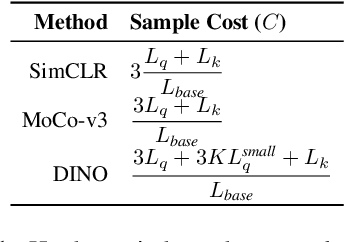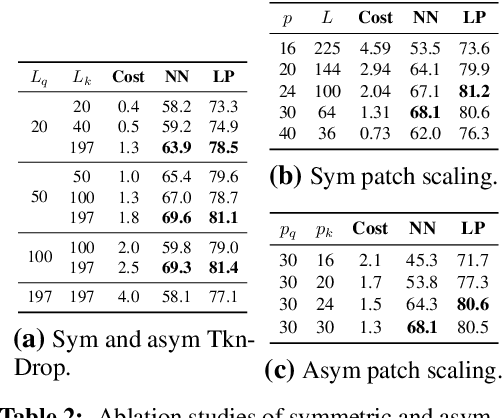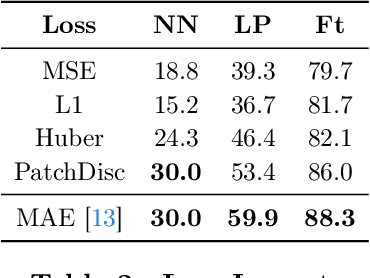Yibing Wei
Scaling Up Audio-Synchronized Visual Animation: An Efficient Training Paradigm
Aug 05, 2025Abstract:Recent advances in audio-synchronized visual animation enable control of video content using audios from specific classes. However, existing methods rely heavily on expensive manual curation of high-quality, class-specific training videos, posing challenges to scaling up to diverse audio-video classes in the open world. In this work, we propose an efficient two-stage training paradigm to scale up audio-synchronized visual animation using abundant but noisy videos. In stage one, we automatically curate large-scale videos for pretraining, allowing the model to learn diverse but imperfect audio-video alignments. In stage two, we finetune the model on manually curated high-quality examples, but only at a small scale, significantly reducing the required human effort. We further enhance synchronization by allowing each frame to access rich audio context via multi-feature conditioning and window attention. To efficiently train the model, we leverage pretrained text-to-video generator and audio encoders, introducing only 1.9\% additional trainable parameters to learn audio-conditioning capability without compromising the generator's prior knowledge. For evaluation, we introduce AVSync48, a benchmark with videos from 48 classes, which is 3$\times$ more diverse than previous benchmarks. Extensive experiments show that our method significantly reduces reliance on manual curation by over 10$\times$, while generalizing to many open classes.
Accelerating Augmentation Invariance Pretraining
Oct 31, 2024



Abstract:Our work tackles the computational challenges of contrastive learning methods, particularly for the pretraining of Vision Transformers (ViTs). Despite the effectiveness of contrastive learning, the substantial computational resources required for training often hinder their practical application. To mitigate this issue, we propose an acceleration framework, leveraging ViT's unique ability to generalize across inputs of varying sequence lengths. Our method employs a mix of sequence compression strategies, including randomized token dropout and flexible patch scaling, to reduce the cost of gradient estimation and accelerate convergence. We further provide an in-depth analysis of the gradient estimation error of various acceleration strategies as well as their impact on downstream tasks, offering valuable insights into the trade-offs between acceleration and performance. We also propose a novel procedure to identify an optimal acceleration schedule to adjust the sequence compression ratios to the training progress, ensuring efficient training without sacrificing downstream performance. Our approach significantly reduces computational overhead across various self-supervised learning algorithms on large-scale datasets. In ImageNet, our method achieves speedups of 4$\times$ in MoCo, 3.3$\times$ in SimCLR, and 2.5$\times$ in DINO, demonstrating substantial efficiency gains.
Towards Latent Masked Image Modeling for Self-Supervised Visual Representation Learning
Jul 22, 2024



Abstract:Masked Image Modeling (MIM) has emerged as a promising method for deriving visual representations from unlabeled image data by predicting missing pixels from masked portions of images. It excels in region-aware learning and provides strong initializations for various tasks, but struggles to capture high-level semantics without further supervised fine-tuning, likely due to the low-level nature of its pixel reconstruction objective. A promising yet unrealized framework is learning representations through masked reconstruction in latent space, combining the locality of MIM with the high-level targets. However, this approach poses significant training challenges as the reconstruction targets are learned in conjunction with the model, potentially leading to trivial or suboptimal solutions.Our study is among the first to thoroughly analyze and address the challenges of such framework, which we refer to as Latent MIM. Through a series of carefully designed experiments and extensive analysis, we identify the source of these challenges, including representation collapsing for joint online/target optimization, learning objectives, the high region correlation in latent space and decoding conditioning. By sequentially addressing these issues, we demonstrate that Latent MIM can indeed learn high-level representations while retaining the benefits of MIM models.
SAGE-NDVI: A Stereotype-Breaking Evaluation Metric for Remote Sensing Image Dehazing Using Satellite-to-Ground NDVI Knowledge
Jun 09, 2023Abstract:Image dehazing is a meaningful low-level computer vision task and can be applied to a variety of contexts. In our industrial deployment scenario based on remote sensing (RS) images, the quality of image dehazing directly affects the grade of our crop identification and growth monitoring products. However, the widely used peak signal-to-noise ratio (PSNR) and structural similarity index (SSIM) provide ambiguous visual interpretation. In this paper, we design a new objective metric for RS image dehazing evaluation. Our proposed metric leverages a ground-based phenology observation resource to calculate the vegetation index error between RS and ground images at a hazy date. Extensive experiments validate that our metric appropriately evaluates different dehazing models and is in line with human visual perception.
 Add to Chrome
Add to Chrome Add to Firefox
Add to Firefox Add to Edge
Add to Edge